This step by step diy woodworking project is about a 14×16 outdoor pavilion plans. I have designed this simple but sturdy pavilion so you can create some shade in your backyard. This pavilion has a gable roof and side railings. Make sure you take a look over the local building codes, so you comply with the regulations. Take a look over the rest of our woodworking plans, if you want to get more building inspiration.
When buying the lumber, you should select the planks with great care, making sure they are straight and without any visible flaws (cracks, knots, twists, decay). Investing in cedar or other weather resistant lumber is a good idea, as it will pay off on the long run. Use a spirit level to plumb and align the components, before inserting the galvanized screws, otherwise the project won’t have a symmetrical look. If you have all the materials and tools required for the project, you could get the job done in about a day. See all my Premium Plans HERE.
Projects made from these plans
14×16 Pavilion – Free DIY Plans
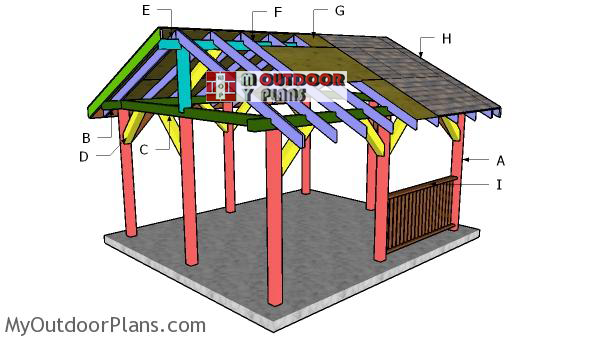
Building-a-14×16-pavilion
Cut & Shopping Lists
- A – 8 pieces of 6×6 lumber – 132″ long POSTS
- B – 2 pieces of 6×6 lumber – 216″ long, 2 pieces – 168″ long TOP PLATES
- C – 12 pieces of 6×6 lumber – 36″ long BRACES
- 8 pieces of 6×6 lumber – 12′
- 2 pieces of 6×6 lumber – 14′
- 2 pieces of 6×6 lumber – 18′
- 6 pieces of 6×6 lumber – 6′
- 5 1/2″ screws, 3 1/2″ screws
- wood glue, stain/paint
- post hole digger
- post anchors (post anchors)
- beam to post connectors
- structural screws for connectors
- strong tie T
Tools
![]() Hammer, Tape measure, Framing square, Level
Hammer, Tape measure, Framing square, Level
![]() Miter saw, Drill machinery, Screwdriver, Sander
Miter saw, Drill machinery, Screwdriver, Sander
Time
Related
- PART 1: 14×16 Pavilion Plans
- PART 2: 14x16 Pavilion Roof Plans
How to build a 14×16 pavilion
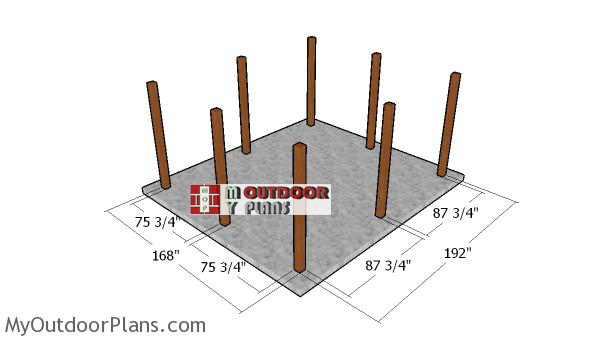
Laying-out-the-posts
The first step of the project is to layout the posts for the 14×16 pavilion. Use batter boards and string to determine the location of the posts. Apply the 3-4-5 rule to every corner of the pavilion, so you make sure they are right angled. Moreover measure the diagonals and make sure they are equal. Determining the location for the pavilion is essential, as you have to comply with the local building codes. Make sure the surface is level and remove the vegetation layer.
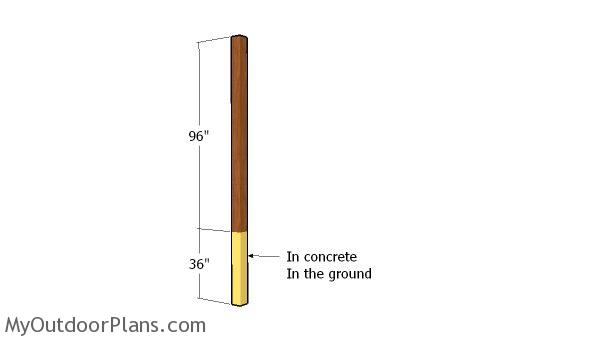
Posts
Level the surface with attention. Remove the vegetation layer, as well. Dig 3′ deep holes into the ground with a post hole digger. Align the holes with attention and then fit form tubes. Fit the 6×6 posts with attention and align them using string. Use a spirit level to plumb the posts and then lock them into place with temporarily braces. Fill the tube forms with concrete and let it dry out for a few days.
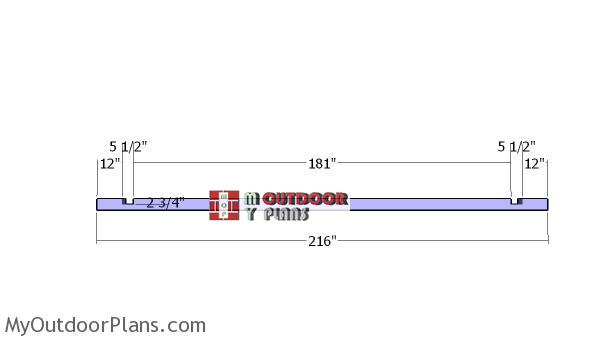
Plates
Use 6×6 lumber for the top plates of the pavilion. As you can notice in the plans, you have to make notches to the beams, so you can join then them together. Mark the areas and then make parallel cuts with a circular saw set at a depth of 2 3/4″. Remove the excess material with chisel and smooth the recess with sandpaper.
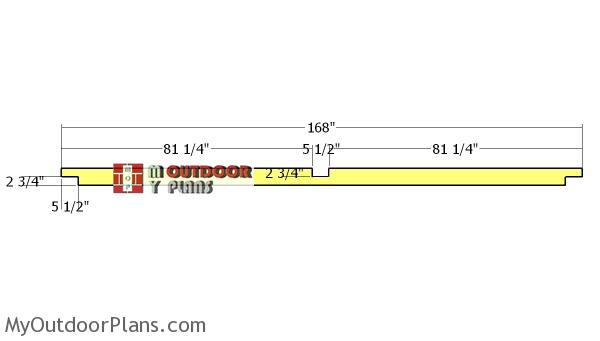
Plate
Repeat the process for the front and back top plates of the pavilion. Make the notches and remove the excess.
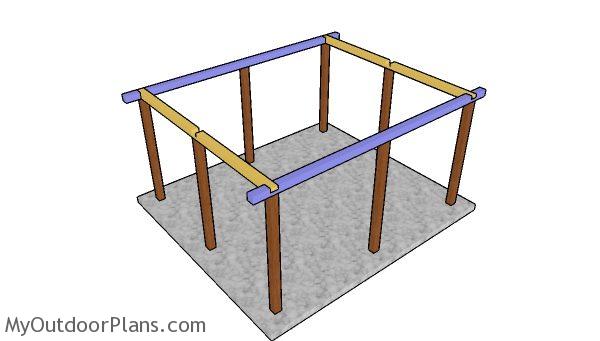
Fitting the plates
Fit the rails to the sides, to the front and to the back of the pavilion. Align the edges flush, making sure the corners are square, drill pilot holes and insert 5 1/2″ screws.
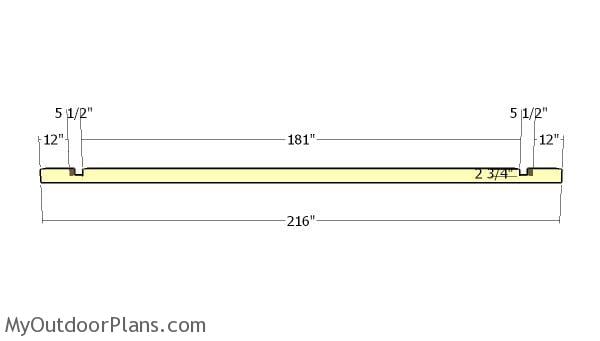
Ridge beam
Continue the project by building the ridge beam. Make recesses to the beam, so you can fit it into place properly. Take accurate measurements before making the cuts, so you get an accurate result.

Front and back braces
Build the braces for the front and back of the pavilion from 6×6 lumber. Use a miter saw to make 45 degree cuts to both ends of the braces. Fit the braces to the posts, after you plumb them vertically. Drill pilot holes and insert 3 1/2″ screws to secure the braces into place tightly.
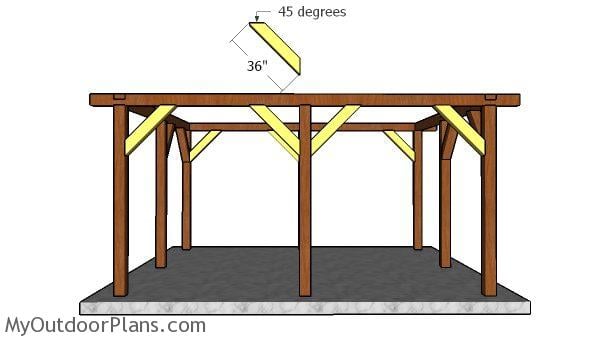
Side trims
Build the braces to the sides of the pavilion, as well, using the same techniques described above.
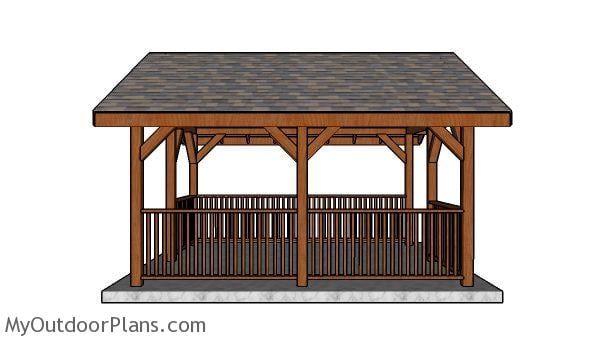
14×16 Pavilion Plans – Side view
You should check out PART 2 of the 14×16 pavilion plans, so you learn how to build the gable roof.
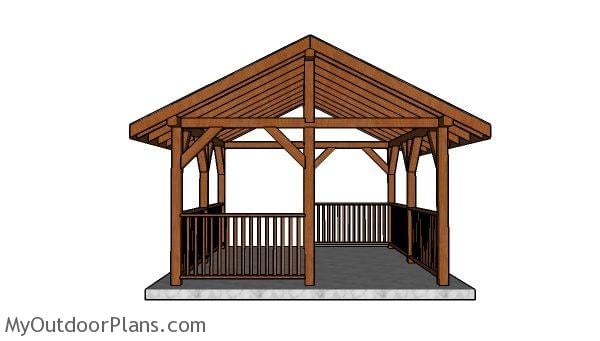
14×16 Pavilion Plans – Front view
Fill the holes with wood putty and let them dry out for a few hours. Smooth the surface with 100-220 grit sandpaper and remove the residues with a damp cloth.
Top Tip: Apply a few coats of paint or stain to the components, to enhance the look of the project.
This woodworking project was about 14×16 outdoor pavilion plans free. If you want to see more outdoor plans, check out the rest of our step by step projects and follow the instructions to obtain a professional result.





